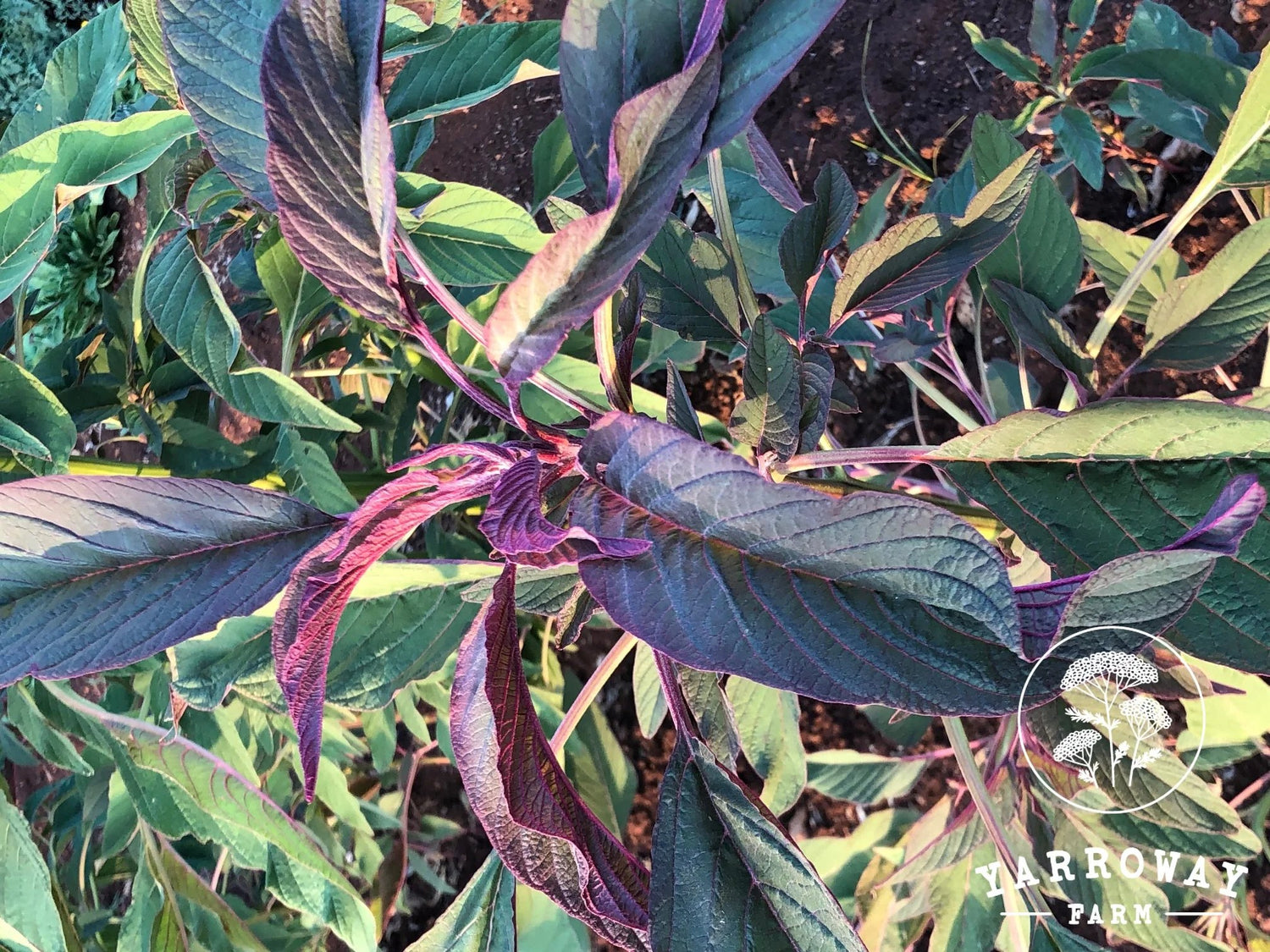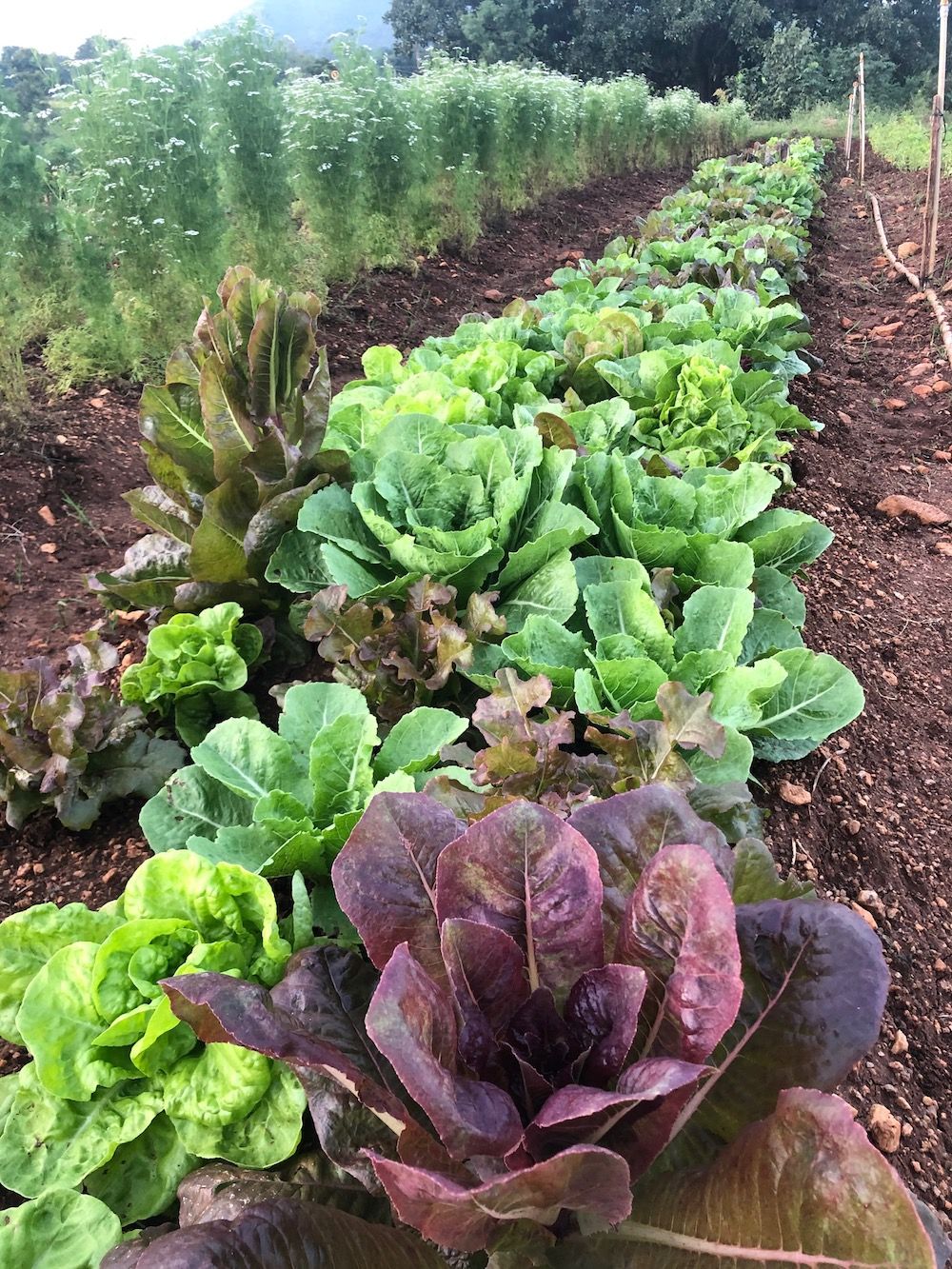A very easy crop to grow that doesn’t demand too much soil nutrition, and needs basic watering. The right time to grow it is what is most important here. Lettuce either forms dense hearts that are cut whole, or open heads that are picked as loose leaves. Some have smooth leaves, others uneven edges, but all are grown in the same way. Very quick to grow, and can be harvested as individual leaves, cut-and-come again style, or as large crunchy or soft heads. Loose-leaf lettuces grow faster and have greater resistance to heat.
There are two broad types of lettuce varieties:
1. Head Lettuce (Iceberg, Romaine, Butterheads, etc.)
2. Leaf Lettuce (Loose leaf in many colors, shapes and textures)
Sowing Style: Transplanting is best for head lettuces. Loose-Leaf lettuce and mixes can be directly sown, but cover the area where you sowed the seeds with a light cloth or green net for a few days so they don’t dry out before germination. Gently water from above the covering for a few days. Take out the covering as soon as you see little seedling popping out.
Time to Sow: Late Monsoon when the flooding stage passes, Autumn is the best and most pleasant time, and early Winter. If the temperature crosses 35 degrees C during the day, there are high chances the lettuce will turn bitter and start bolting upwards.
Plant Spacing: Varies by variety. Refer to your seed packet or the product page for the spacing requirements. Lettuce has shallow roots and needs to be transplanted very carefully.
Good Companions: Cucumber, Carrot, Beet, Radish, Onions
Bad Companions: None
Soil and Cultivation Requirements:
Lettuce needs to grow quickly to be at its best, and will bolt if it lacks good soil or water. It needs a sunny or partially shaded site with good humus in the soil. Dark-leaf type lettuces are meant for cooler weather growing and will scorch in full sun, so give them a little shade. Use good compost during sowing, transplanting, and once between transplanting and harvest for good results.
Irrigation: Heading lettuces prefer drip irrigation because if moisture starts sitting in the folds of the leaves and does not dry out properly, it can cause rotting. Loose-leaf lettuces and mixes enjoy growing under sprinklers.
Harvesting and Storing:
Lettuce with heads/hearts are cut off at the base to avoid disturbing nearby plants, although single leaves can also be picked if that is preferred. If cut at the base, the heads/hearts tend to come again with continued irrigation, but will be of lower quality and taste. Loose-leaf lettuces can be harvested multiple times by cutting out the grown leaves at regular intervals. Lettuce cannot be stored for long after harvest, they start to wilt. If you harvest during a hot day, make sure you dip them in cool water and dry them in a cool shaded place before consuming, refrigerating, or shipping it locally.


